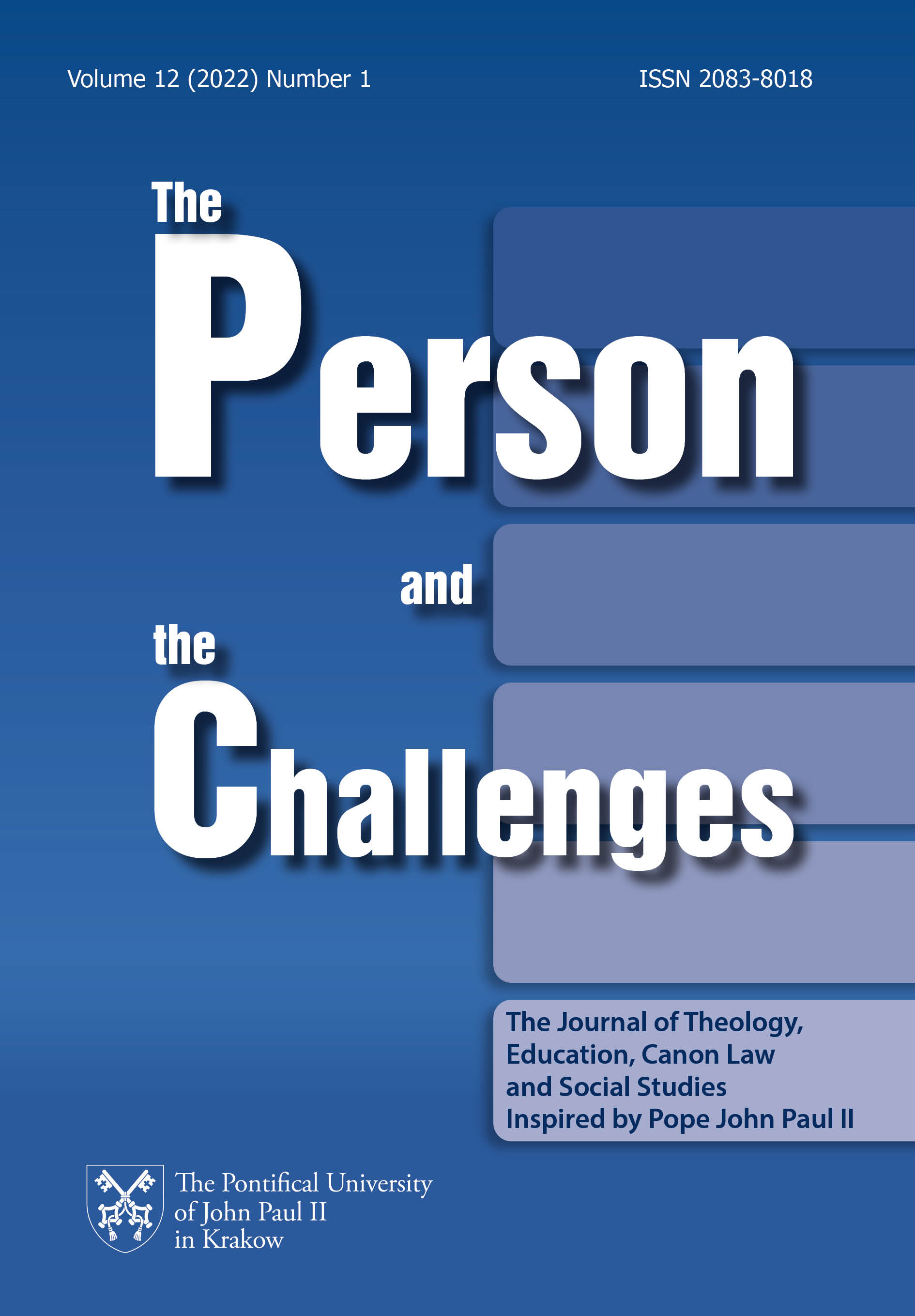The Catholic Church’s Responsibility in Creating a Safeguarding Culture
DOI:
https://doi.org/10.15633/pch.4233Słowa kluczowe:
Safeguarding, Responsibility, Accountability, Victims, Power, systemic aspects of organizationAbstrakt
The safeguarding of minors and of vulnerable adult persons is an intrinsic aspect of the mission that the Lord has entrusted the Church and it is the responsibility of all the faithful to fulfil it, whatever capacity they hold in the Church. Unfortunately, it is not possible to eradicate child abuse entirely as it is a human reality, but much can be done by creating a culture of safe space and safe relationships within the Church and beyond. The Catholic Church, as the oldest and biggest institution in the world and with its religious and moral values, has a special responsibility in preventing any kind of abuse, in protecting the most vulnerable, and furthermore, in Safeguarding; in creating safe spaces and safe relationships. Listening to victims and survivors of abuse who have been harmed in the Church or outside, is key for being and acting in a responsible, accountable, and transparent way. This is the cornerstone for credibility and for promoting the faith.
Bibliografia
Altieri C., Analysis: How the Pope’s reform will change abuse reporting, en: Catholic Herald, 3 May 2019, https://catholicherald.co.uk/analysis-how-the-popes-reform-will-change-abuse-reporting/ (04.02.2022).
Bove L., Giulia e il lupa. Storia di un abuso sessuale nella Chiesa, Milano 2016, Ancora.
Coleridge M., The Culture of the Catholic Church and the Abuse of Minors at the “Anglophone Safeguarding Conference”, Rome, 20 June 2018 (private document).
Conferenza Episcopale Italiana e Conferenza Italiana Superiori Maggiori, Linee guida per la tutela dei minori e delle persone vulnerabili, 2019: https://www.chiesacattolica.it/wp-content/uploads/sites/31/2019/06/27/Linee-guida-per-la-tutela-dei-minori-e-delle-persone-vulnerabili.pdf (04.02.2022).
Cupich B., Synodality: Jointly Responsible, Presentation during “The Protection of Minors in the Church” meeting in Rome, 22 February 2019: https://www.vatican.va/resources/resources_card-cupich-protezioneminori_20190222_en.html (04.02.2022).
Garnier-Beauvier V., Au troisième jour: De l’abime a la lumière, Paris 2017, Artege.
IICSA, Ampleforth and Downside Investigation Report, August 2018, 64, paragr. 168.
Keenan J., The World at Risk. Vulnerability, Precarity and Connectedness, “Theological Studies” 81 (2020), pp. 132-149.
Orobator A., Between Ecclesiology and Ethics: Promoting a Culture of Protection and Care, “Theological Studies” 80 (2019) 4, pp. 916–918.
Pope Francis, “Letter to the People of God”, Vatican 2018: https://www.vatican.va/content/francesco/en/letters/2018/documents/papa-francesco_20180820_lettera-popolo-didio.html (04.02.2022).
Pope Francis, “Apostolic letter issued ‘motu proprio’ ‘As a loving Mother’”, Vatican 2016: http://www.vatican.va/content/francesco/en/apost_letters/documents/papa-francesco_lettera-ap_20160604_come-una-madre-amorevole.html (04.02.2022).
Pope Francis, “Apostolic letter issued ‘motu proprio’ ‘Vos Estis Lux Mundi’”, Vatican 2019: https://www.vatican.va/content/francesco/en/motu_proprio/documents/papa-francesco-motu-proprio-20190507_vos-estis-lux-mundi.html (04.02.2022).
Parolin P., “Instruction ‘On the Confidentiality of Legal Proceedings’”, Roma, 2019: https://press.vatican.va/content/salastampa/it/bollettino/pubblico/2019/12/17/1011/02062.html#en (04.02.2022).
Pittet D., La perdono, padre, Milano 2017, Piemme.
Scottish Child Abuse Inquiry, Case Study 2: The provision of residential care for children in Scotland by the sisters of Nazareth between 1933 and 1984 in the Nazareth Houses in Aberdeen, Cardonald, Lasswade, and Kilmarick, 2019, p. IX: https://www.childabuseinquiry.scot/media/2146/findings-s0n-case-study-2_p7-190628.pdf (04.02.2022).
Spadaro A., A Big Heart Open to God: An interview with Pope Francis, “America, The Jesuit Review”, 2013: https://www.americamagazine.org/faith/2013/09/30/big-heart-open-god-interview-pope-francis (04.02.2022).
Wijlens M., The Church Being a Safe Place for Children. Opportunities and Challenges far the Ministry of Safeguarding, 2020, pp. 11–12, https://iadc.unigre.it/wp-content/uploads/2020/02/Wijlens-Graduation-Diploma-CCP-14.02.2020.pdf (04.02.2022).
Pobrania
Opublikowane
Numer
Dział
Licencja
Autorzy publikujący w czasopiśmie udzielają jego wydawcy zgody o następującej treści:
- Autor zachowuje autorskie prawa majątkowe do utworu, a jednocześnie udziela wydawcy czasopisma zgody na jego pierwszą publikację w wersji drukowanej i wersji online na licencji Creative Commons Uznanie autorstwa 4.0 Międzynarodowe oraz zgody na wykonywanie opracowań, w tym przekładów.
- Autor ma możliwość udzielania zgody niewyłącznej na opublikowanie utworu w wersji, która ukazała się w czasopiśmie (np. zamieszczenia go w repozytorium instytucjonalnym lub opublikowania w książce), wraz z informacją o jego pierwszej publikacji w czasopiśmie.
- Autor może umieścić swój utwór online (np. w repozytorium instytucjonalnym lub na swojej stronie internetowej) jeszcze przed zgłoszeniem utworu do czasopisma.

